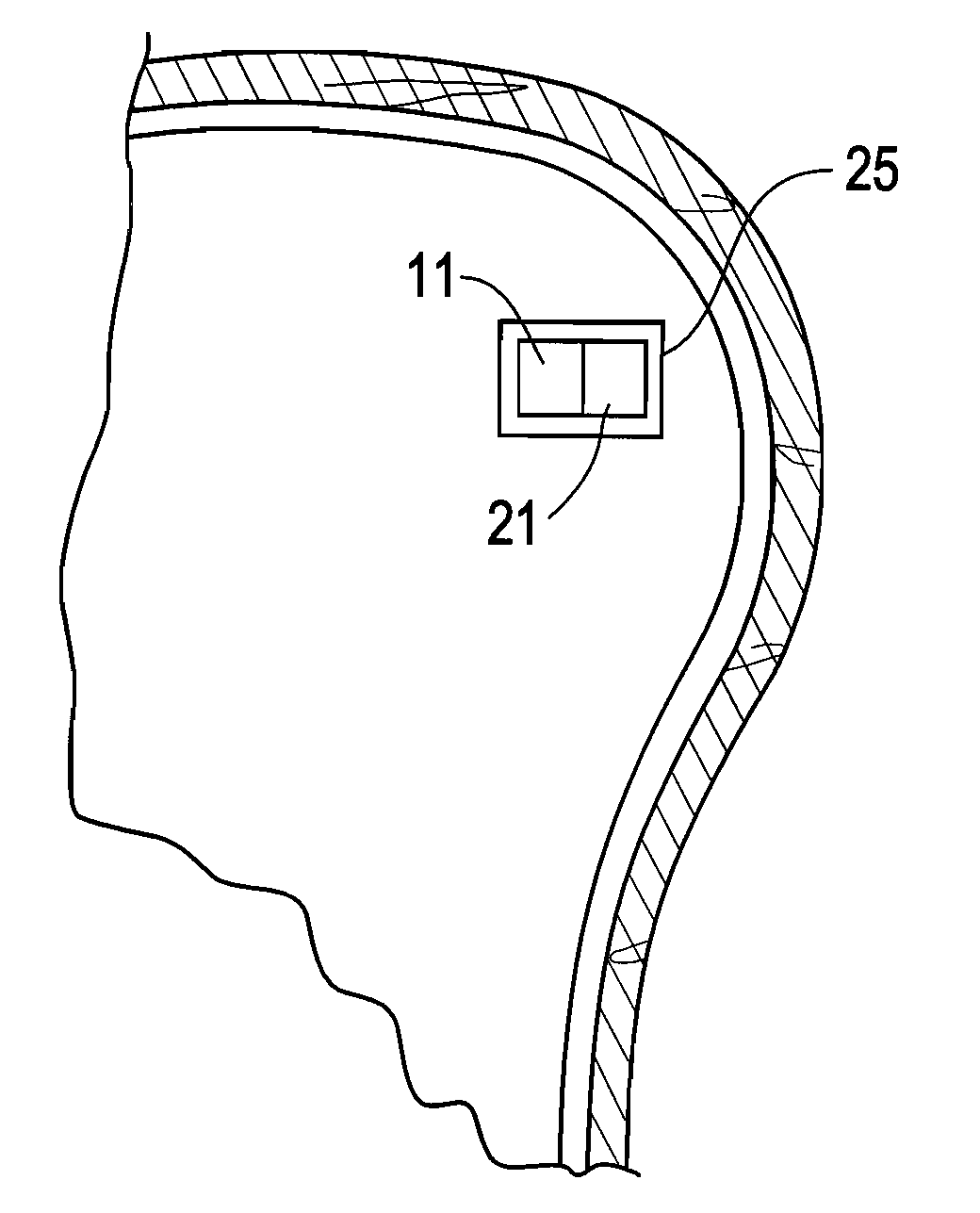Intracranial Red Light Treatment Device For Chronic Pain
a technology treatment device, which is applied in the field of intracranial red light treatment device for chronic pain, can solve the problems of failure, low back pain, and a significant proportion of patients who undergo this surgery and yet still experience chronic back pain, and achieve the effect of stimulating the release of pain-reducing endorphins and increasing the beta-endorphin plasma concentration in those patients
- Summary
- Abstract
- Description
- Claims
- Application Information
AI Technical Summary
Benefits of technology
Problems solved by technology
Method used
Image
Examples
Embodiment Construction
[0029]Now referring to FIG. 1, there is provided a cross-section of the brain in which the cerebral aqueduct CA connects the third ventricle 3V with the fourth ventricle 4V.
[0030]In one preferred embodiment of the present invention, the distal end of the optical wave guide is attached to a translucent light diffuser, which is often in the form of a tube. The light diffuser is placed in the cerebral aqueduct and acts not only as a light delivery device to the PAG (which surrounds the cerebral aqueduct), but also as an anchor within the compliant cerebral aqueduct that holds the device in place.
[0031]The literature has repeatedly reported the successful placement of stents in the cerebral aqueduct as a method of managing blockage of the cerebral aqueduct or fourth ventricle. See, for example, Shin, J. Neurosurg., June 2000 92(6) 1036-9; Cinalli, J. Neurosurg., January 2006, 104(1 Supp.) 21-7; Sagan, J. Neurosurg. (4 Supp pediatrics) 105: 275-280, 2006; Schroeder, Operative Neurosurger...
PUM
 Login to View More
Login to View More Abstract
Description
Claims
Application Information
 Login to View More
Login to View More - R&D
- Intellectual Property
- Life Sciences
- Materials
- Tech Scout
- Unparalleled Data Quality
- Higher Quality Content
- 60% Fewer Hallucinations
Browse by: Latest US Patents, China's latest patents, Technical Efficacy Thesaurus, Application Domain, Technology Topic, Popular Technical Reports.
© 2025 PatSnap. All rights reserved.Legal|Privacy policy|Modern Slavery Act Transparency Statement|Sitemap|About US| Contact US: help@patsnap.com



